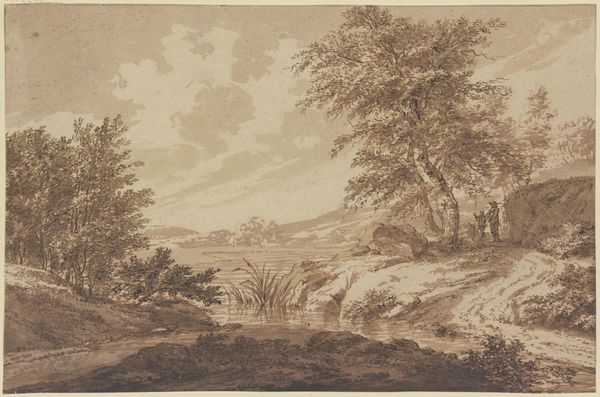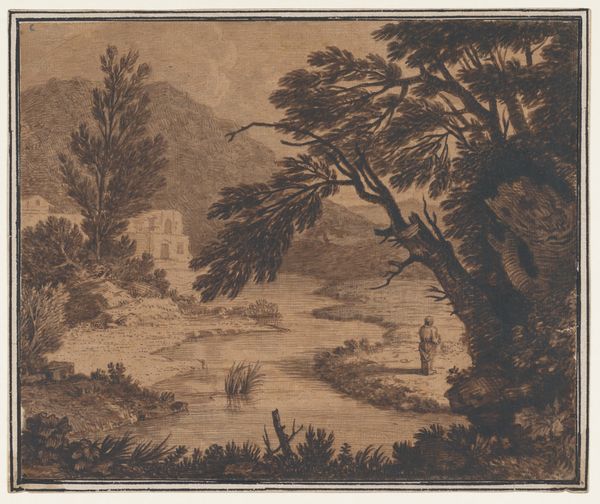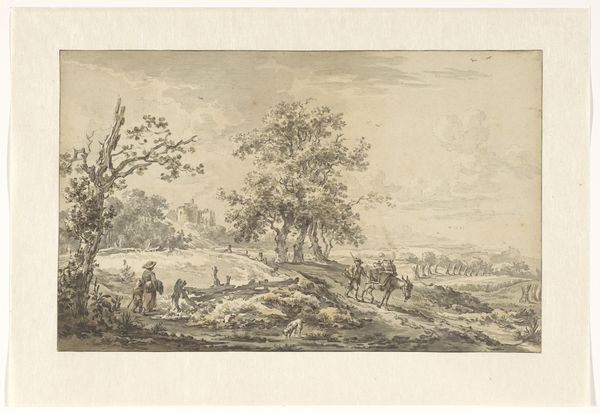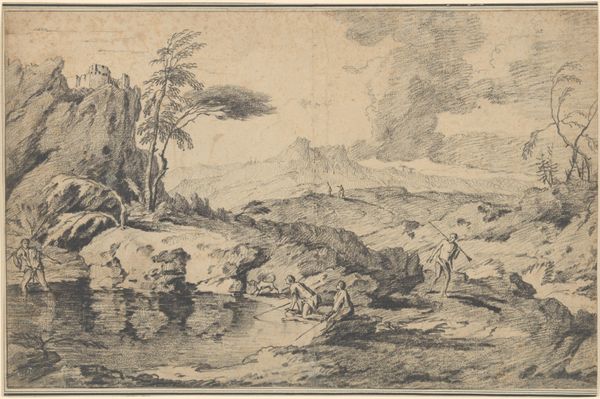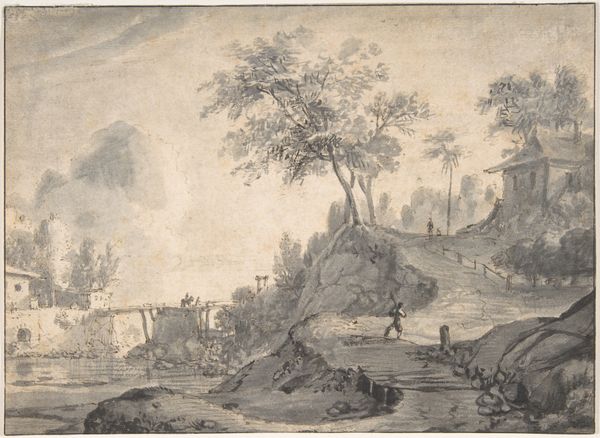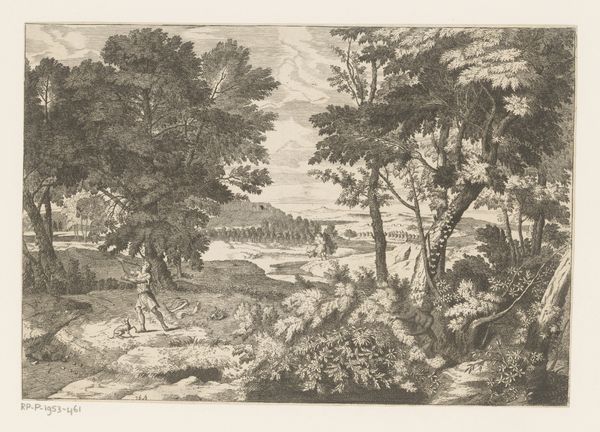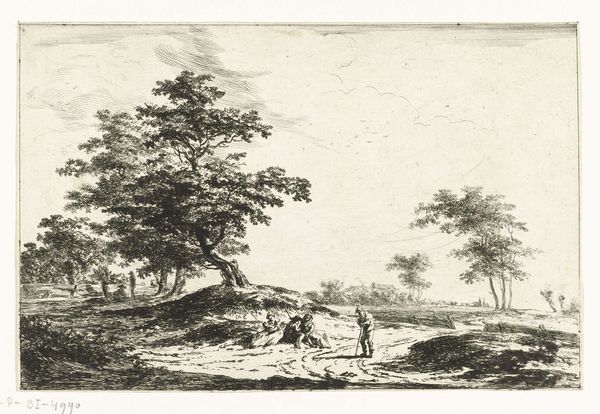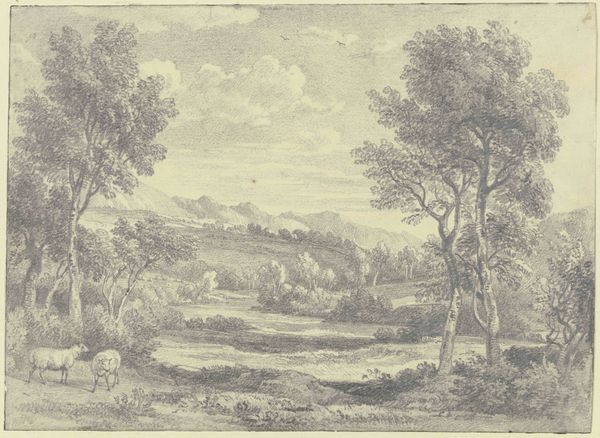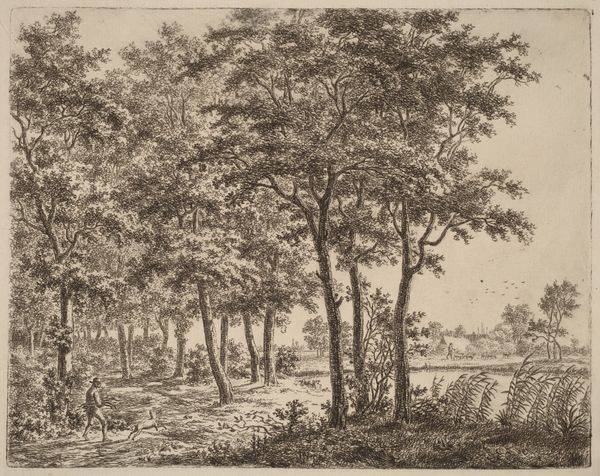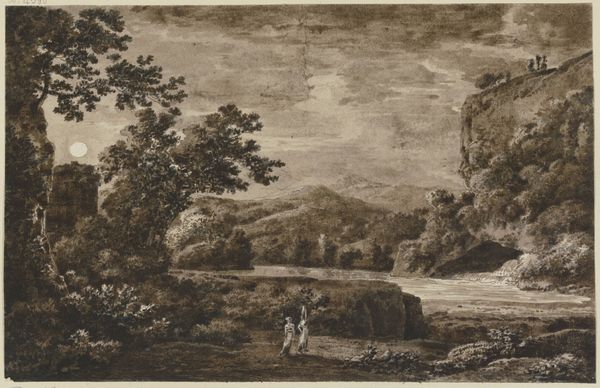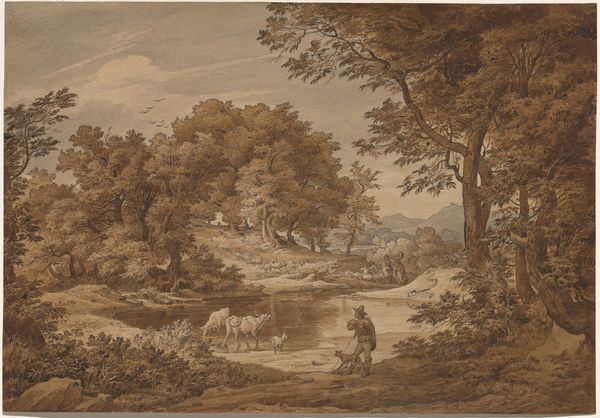
drawing, print, etching, paper, ink, pen
#
drawing
#
baroque
#
ink painting
# print
#
etching
#
pencil sketch
#
landscape
#
charcoal drawing
#
paper
#
ink
#
pencil drawing
#
pen
#
cityscape
Dimensions: 273 × 388 mm
Copyright: Public Domain
Editor: Looking at Claude Lorrain's "Seascape," created using pen, ink, and etching, I'm struck by its quiet stillness. The details are so delicate, but it feels like more than just a pretty picture. What do you see in this piece that connects it to the world outside the image itself? Curator: Well, beyond the serene composition, I see a carefully constructed vision of power and order. Lorrain, working in the Baroque era, often depicted landscapes that weren't just about nature but were stages for demonstrating human control. Consider the tiny figures, seemingly dwarfed by the vast landscape. Do they seem to be masters of their domain, or are they more like players in a drama orchestrated by someone else? Editor: I guess they seem a bit like props now that you mention it. They don't seem to "own" the space; they're just…there. So, you’re saying it reflects societal structures of the time? Curator: Exactly! The composition—the receding vista, the controlled placement of figures, the subtle suggestion of classical ruins in the distance—it all speaks to a desire for rational organization, reflecting the ambitions of the powerful patrons who commissioned these works. How might the consumption of these images reinforced ideas about social hierarchy and the "natural" order? Editor: It's fascinating how what appears to be a peaceful landscape is actually a statement about social control and power. The people enjoying these landscape should reinforce their elite positions in society. It definitely shifts my perspective on landscape art in general! Curator: Indeed. Art serves not just aesthetic purposes but as an ideological instrument, shaping perspectives and reinforcing societal norms. It makes you consider whose stories get told, and from what point of view, doesn’t it? Editor: Absolutely. I’ll never look at a landscape quite the same way again. Curator: And that’s the beautiful, complex role that art history can play!
Comments
No comments
Be the first to comment and join the conversation on the ultimate creative platform.
